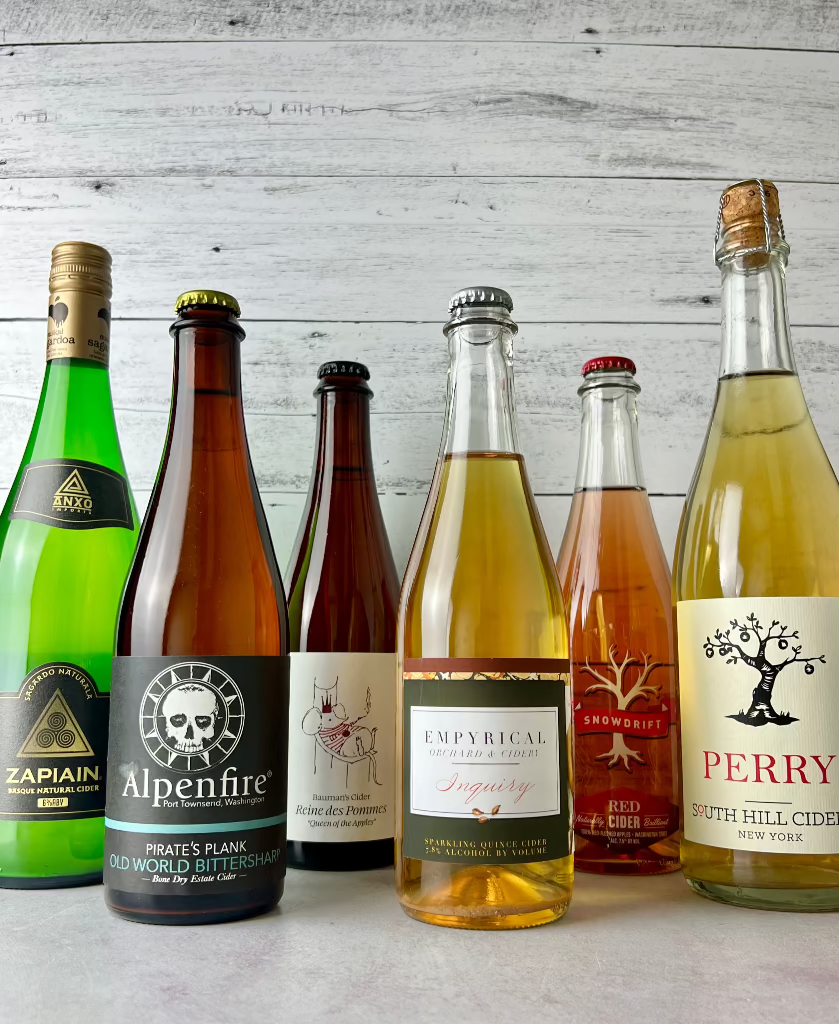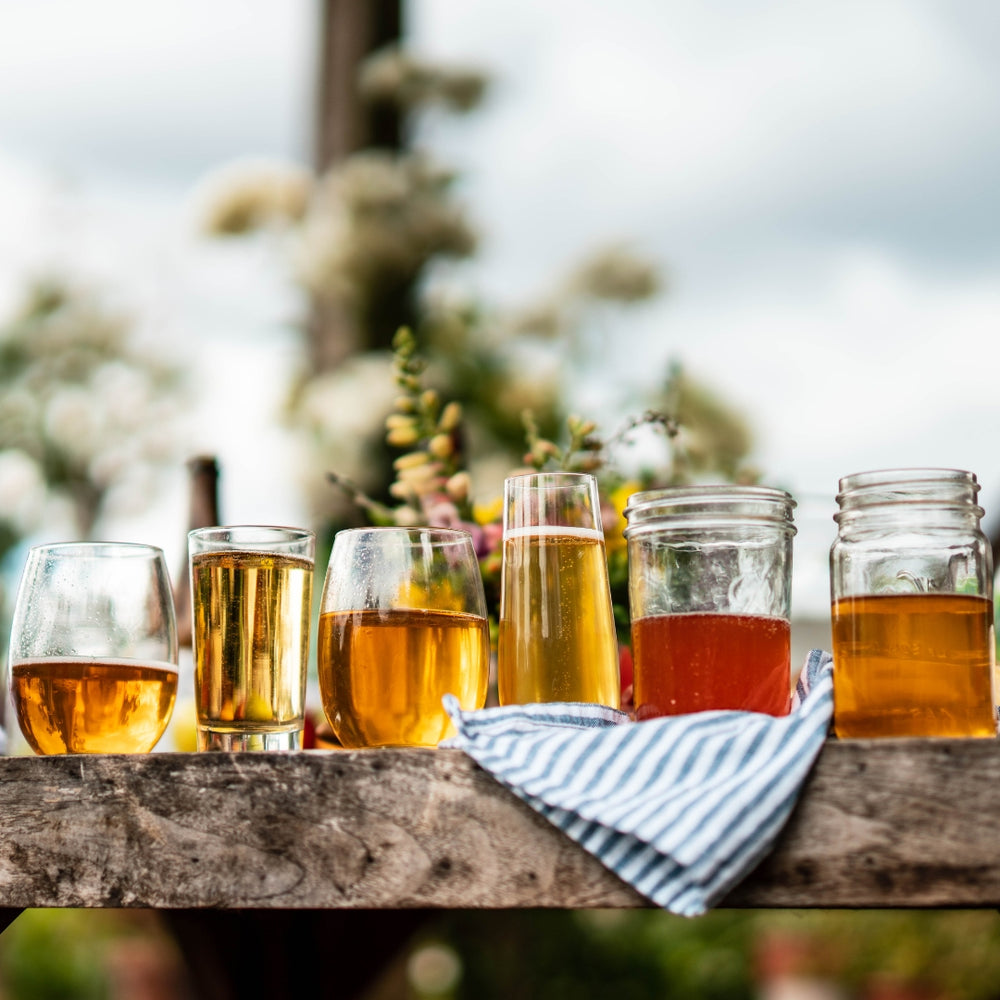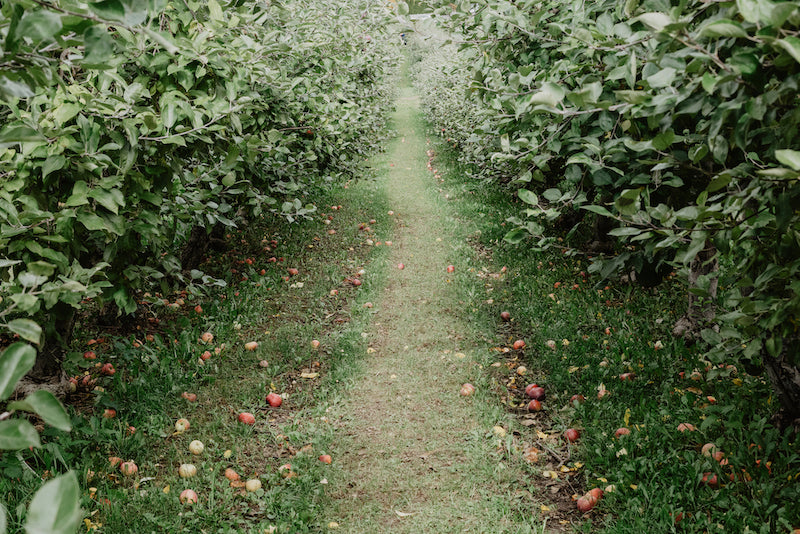Cider Terminology
ABV – Alcohol By Volume (Alcohol Strength in beverage)
Acid - The primary acid found in apples is malic acid, which contributes to the tart and sour sensations in ciders. Pears contain both malic acid and citric acid
Bittersharp (Apple) - An apple variety that contains higher levels of both acidity and tannins, specifically over 4.5 grams per liter (g/L) of acidity and over 2 g/L of tannins
Bittersweet (Apple) - An apple variety that contains higher levels of tannins and lower levels of acidity, specifically over 2 g/L of tannins and less than 4.5 g/L of acidity
Bottle Conditioned - Naturally sparking cider achieved by either finishing the primary fermentation in the bottle or through secondary fermentation in the bottle
Brettanomyces (Brett) - A wild yeast commonly found on fruit skins. The characteristic phenolic taste is often a desired trait in ciders, but can also be considered a fault when it dominates the cider
CO2 - Carbon Dioxide (bubbles)
Coferment - A term meaning either to ferment two different fruits together. For our purposes, we refer to something as a coferement if two different types of fruit are fermented together and one of those is an apple or other pome fruit. For more information on coferements, read our blog post here.
Cyser – A blend of cider and mead, (technically a melomel). A cyser is a mead which has been fermented with apple juices rather than water
Horizontal Tasting - Tasting ciders made similarly but by different cidermakers, or tasting ciders made from the same apples grown in different regions
Ice Cider - A naturally sweet cider made from either frozen apples (cyroextraction) or frozen juice (cryoconcentration). Through the use freezing, the natural sugars in the apples/apple juice becomes concentrated. Most ice ciders are made through the method of cryoconcentration, which means harvesting and pressing the apples in the fall and then leaving the juice outside during the winter to freeze. This method was originally developed in Quebec, Canada in the 1990s
Keeved – A traditional process associated with cidermaking traditions in Northern France and Western England. It's a complex process, but essentially involves removing nutrients from the juice so that fermentation slows and is eventually halted before the sugars can ferment out. The result is a naturally sweet cider that is typically lower in ABV
Lees - Deposits of spent yeast and other apple/pear matter that accumulates during fermentation
Maceration - The process of leaving ground up apple pulp to sit for a period of time before pressing. The oxidation of the apple pulp can enhance aromas of the cider and can also reduce tannin levels
Malolactic Fermentation (MLF) - A biochemical transformation of naturally occurring malic acid into lactic acid by lactic acid bacteria. Lactic acid is smoother and softer than malic acid, and often produces creamy, yogurt, or butterscotch-type flavors in cider
Narwhal - A highly sought after, limited, or hard to find cider. In the beer world, such beers are called "whales". In the wine world, such wines are called "unicorns".
Natural Fermentation - Fermenting cider with the yeast that is naturally occurring on the fruit and in the air, rather than introducing yeast
Perry - Like cider, but made with pears
Pét Nat (short for Pétillant Natural) - A natural sparkling cider achieved through finishing the primary fermentation in the bottle without adding yeast or sugar
Pomace - The spent apple (or pear) pulp after the fruit has been pressed
Pommeau - A traditionally French endeavor, specifically in the Normandy and Brittany regions of Northern France, made by combining two-thirds unfremented apple juice with one-third Calvados (apple brandy). The mixture is then aged in oak barrels. The result is a sweeter, higher ABV (16% - 18%) beverage, much akin to a dessert wine. Pommeau is often served as an aperitif before meals or paired with dessert. For more info, visit our blog post: Cider 101, All About Pommeau
Sessionable – Suitable to have a few servings in a row given a low ABV
Sharp (Apple) - An apple variety that contains higher levels of acidity and lower levels of tannins, specifically over 4.5 g/L of acidity and less than 2 g/L of tannins
Single Varietal (SV) - Cider made with only one specific apple variety
Still – Cider that has no carbonation
Sulfites - Sulfer dioxide (SO2), which is used in the cidermaking process as a preservative and anti-microbial agent to reduce the risk of infection and refermentation
Sweet (Apple) - An apple variety that contains both lower levels of acidity and lower levels of tannins, specifically less than 4.5 g/L of acidity and less than 2 g/L of tannins
Tannins – A compound naturally occurring in apples (see Bittersharp and Bittersweet) that contributes to the mouthfeel of a cider. Can be perceived as bitter and/or astringent
Traditional Method (Methode Champenoise) - Characterized by secondary fermentation in the bottle (bottle conditioning) by adding sugar and yeast; typically results in a higher alcohol cider due to having been fermented twice
Terroir – Characteristic taste and flavor imparted to a cider by the environment in which it is produced (where the apples are grown or the cider is made)
Vertical Tasting – Tasting multiple ciders of the same cider made by the same producer, but made in different years (vintages). By making sure everything else stays the same (the producer, the land, the varietals), you can compare the the different vintages
Vintage - the year the cider was made, more specifically the year the fruit was harvested and pressed





